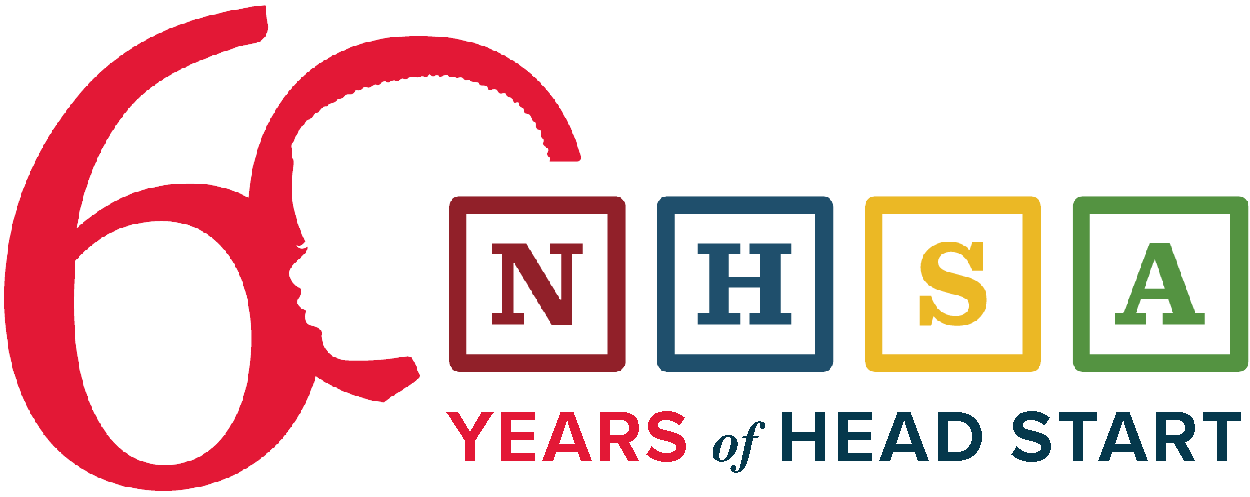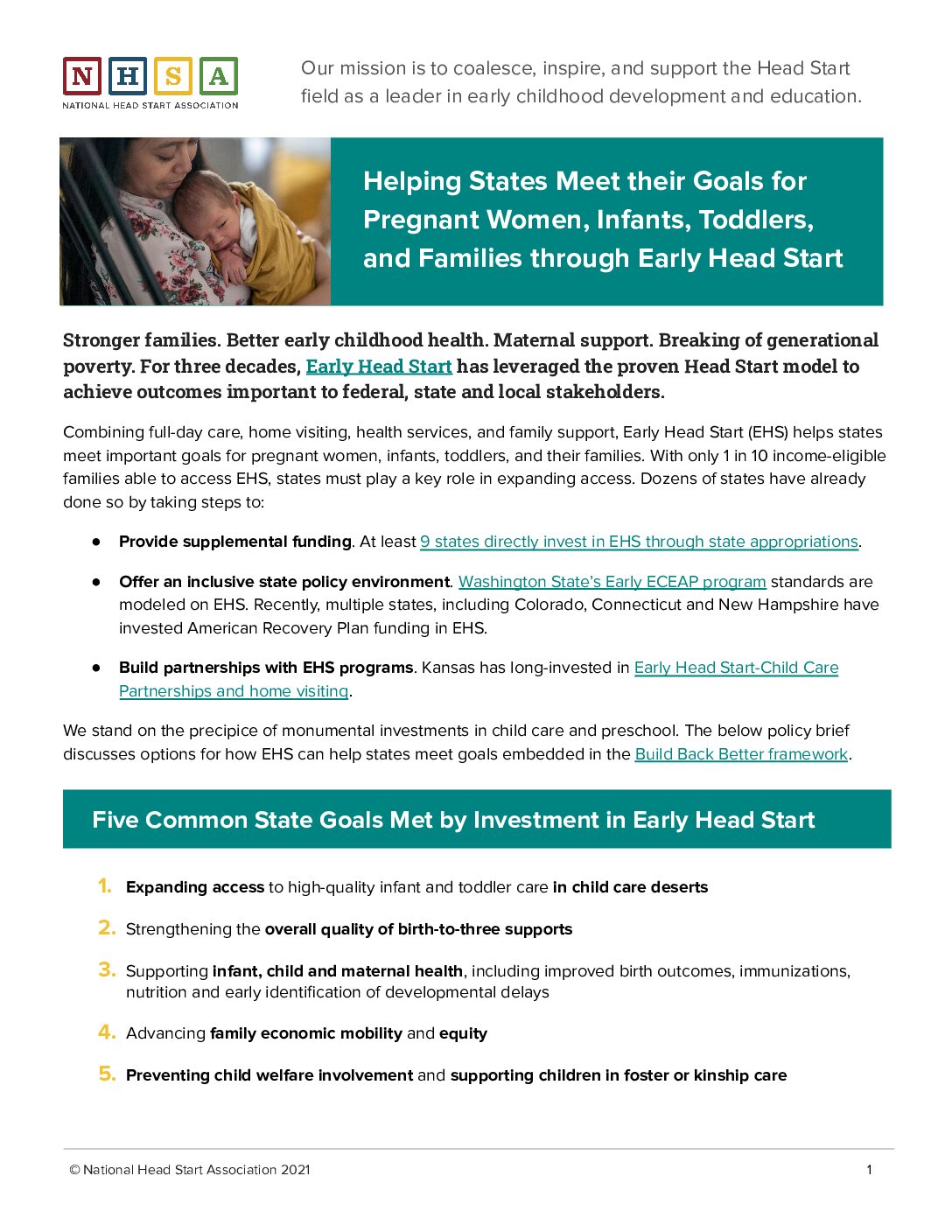Early Head Start (EHS) combines full-day care, home visiting, health services, and family support, helping states meet important goals for pregnant women, infants, toddlers, and their families. There is a 500,000 slot gap between funded EHS slots and Head Start slots. Closing this gap will require more federal investment and targeted state efforts to accelerate progress.
As Head Start stands on the precipice of monumental investments in child care and preschool, NHSA has developed a new policy brief discussing five options for how EHS can help states meet goals embedded in recent policy framework.
-
Expanding access in child care deserts to high-quality infant and toddler care
Create a state EHS funding stream to direct funding to federal grant recipients in good standing or expand the use of contracts to fund or supplement EHS services and supports.
-
Strengthening the overall quality of birth-to-three supports
Adjust child care rules and regulations to facilitate EHS-CCP growth, especially for underserved populations and through family child care settings.
-
Supporting infant, child and maternal health, including improved birth outcomes, immunizations, nutrition, and early identification of developmental delays
Expand support for EHS home visiting. 34% of current Early Head Start enrollment is serviced through the home visiting program option and it acts as a critical outreach and engagement model.
-
Advancing family economic mobility and equity
Provide state funding for “quality improvement” services as defined in the Head Start Act, flexible funds programs can be used to address barriers to accessing and maintaining enrollment in EHS, such as a lack of transportation, lagging facility quality, a lack of bilingual staff and staffing needed to provide trauma-informed care.
-
Preventing child welfare involvement and supporting children in foster or kinship care
Establish a state entitlement to EHS for children in foster care to build on automatic federal eligibility. Fund federal grant recipients to address unmet needs. If EHS capacity is too limited, fund grant recipients to establish supportive child care partnerships.
Expanding Early Head Start through existing Head Start programs is a critical strategy to create a true prenatal-to-five continuum that supports children through entry into Kindergarten. Explore the resource in full for more state policy options.

